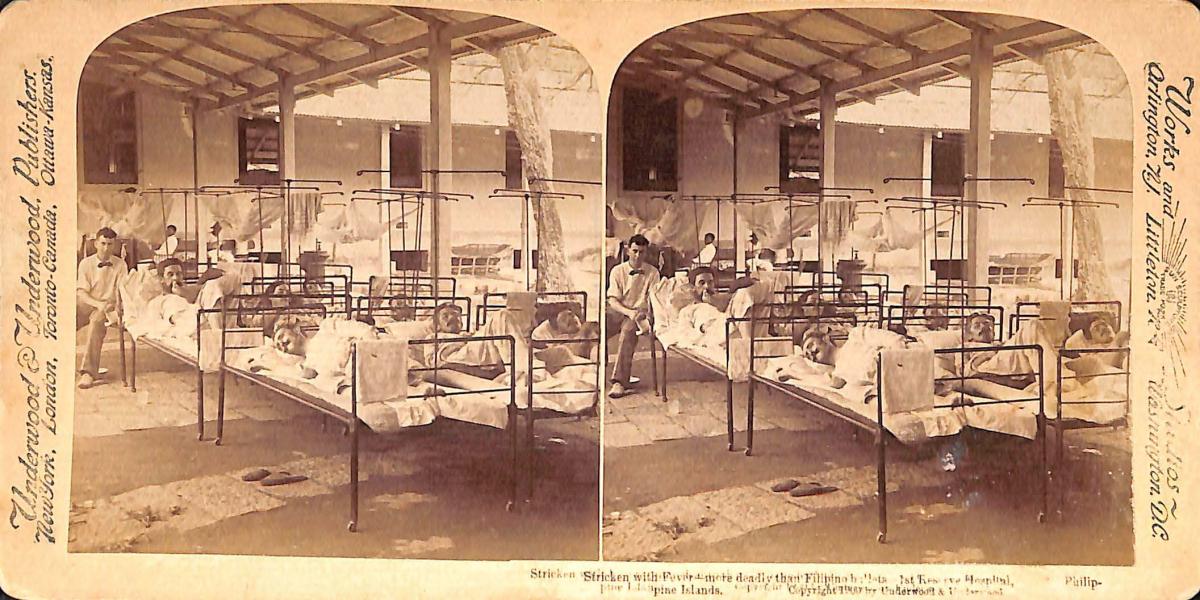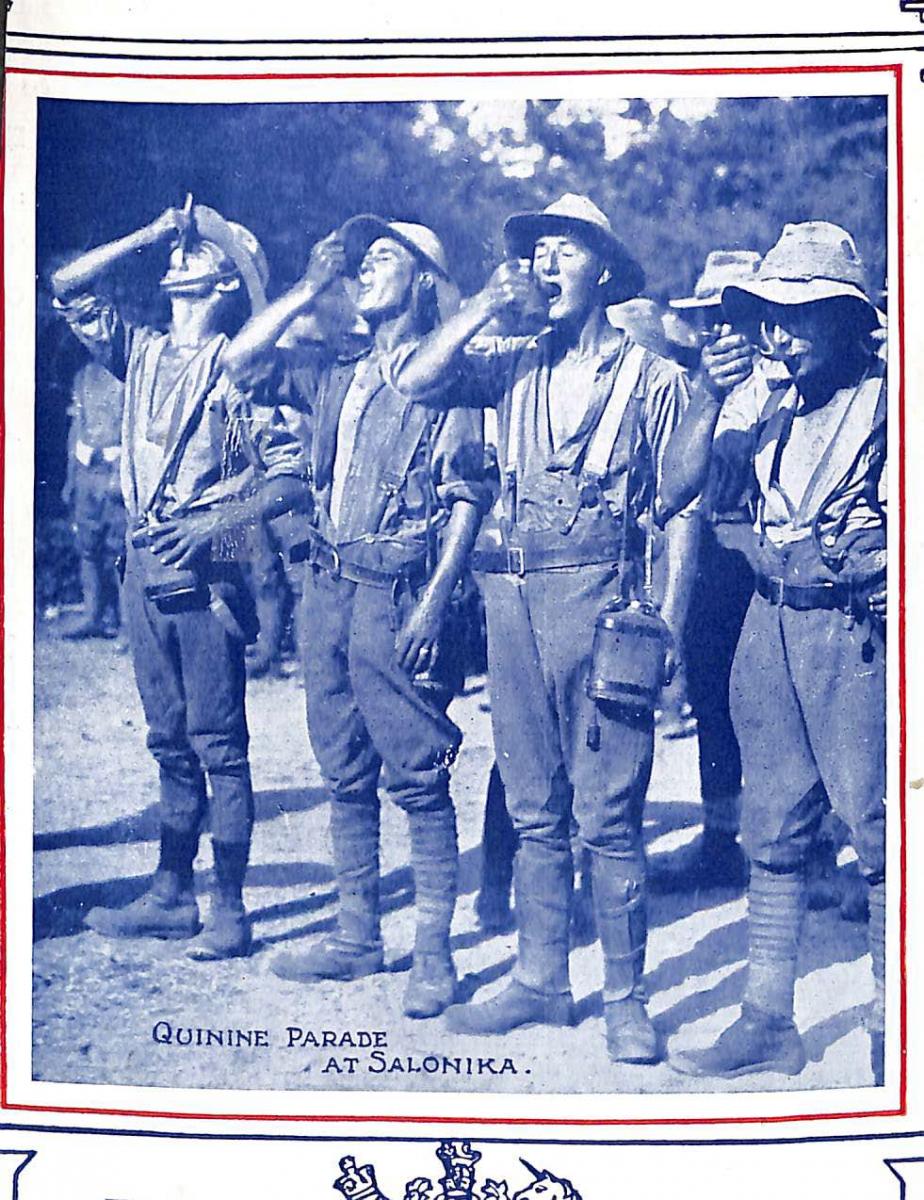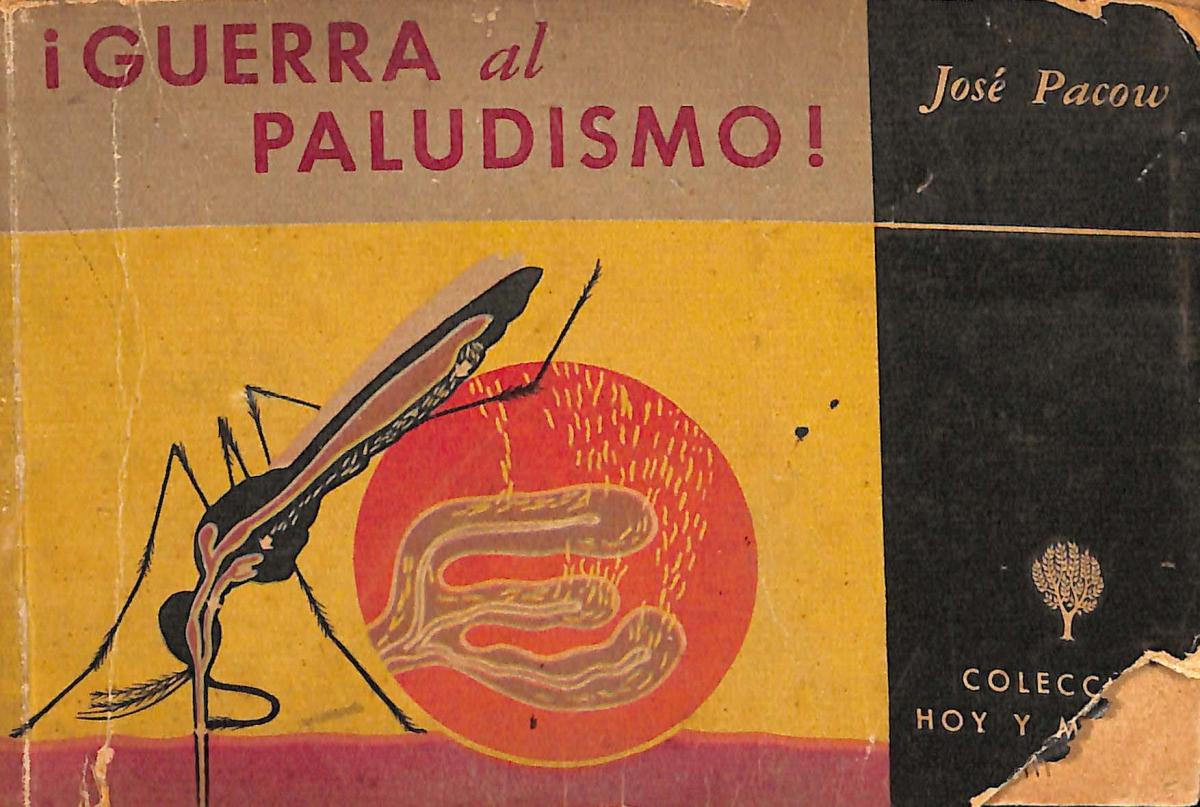 Pacow, J. ¡Guerra al paludismo!. Buenos Aires: Editorial Abril, 1947.
Pacow, J. ¡Guerra al paludismo!. Buenos Aires: Editorial Abril, 1947.
Malaria control strategies have historically been presented as a fight between humans and the mosquito vector of the disease-causing parasite. Thus it is common to use war terminology. In this case, it is an illustrated children's book, which describes basic notions about the disease.
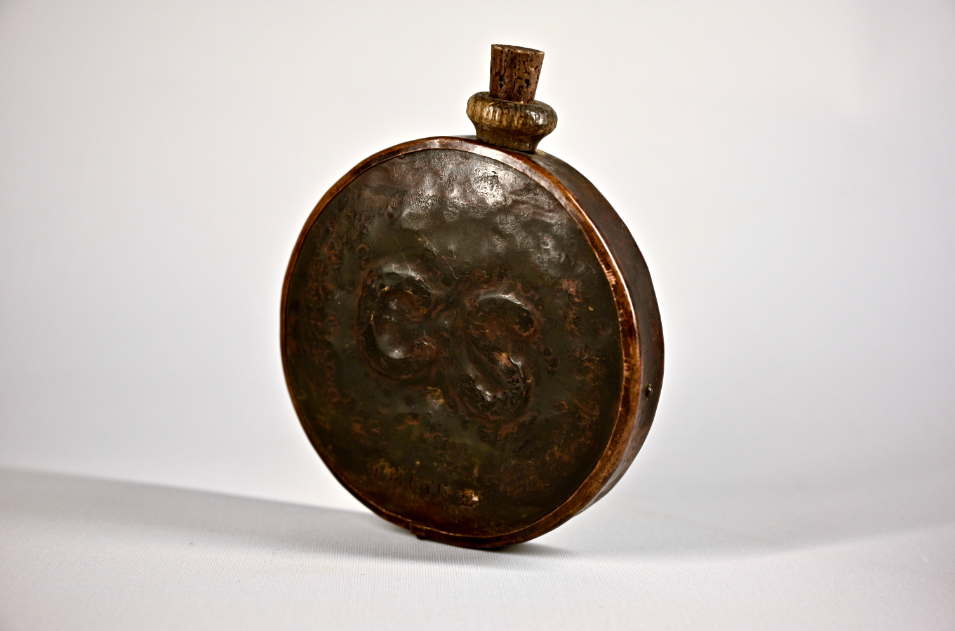 Canteen for quinine. Estats Units: 1861-1865.
Canteen for quinine. Estats Units: 1861-1865.
Canteen used by Confederate Army soldiers during the American Civil War (1861-1865).
B.W. Kilburn. Stricken with fever's more deadly than Filipino bullets. Estats Units: Underwood & Underwood Publishers, 1900.
Daguerreotype showing patients admitted to a hospital in the Philippines during the Philippine-American War (1899-1902). The image is accompanied by the following sentence: fever, more deadly than Philippine bullets.
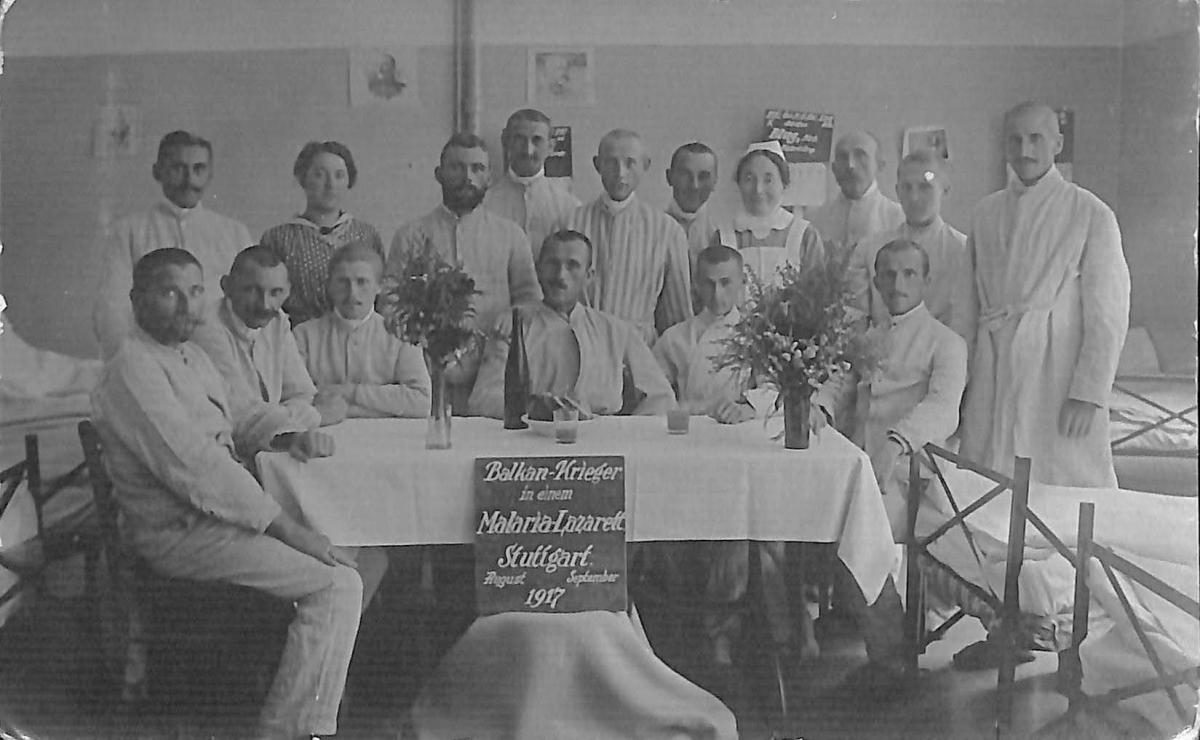 Photograph of the malaria hospital ward of the military hospital for troops on the Balkan front. Suttgart: 1917.
Photograph of the malaria hospital ward of the military hospital for troops on the Balkan front. Suttgart: 1917.
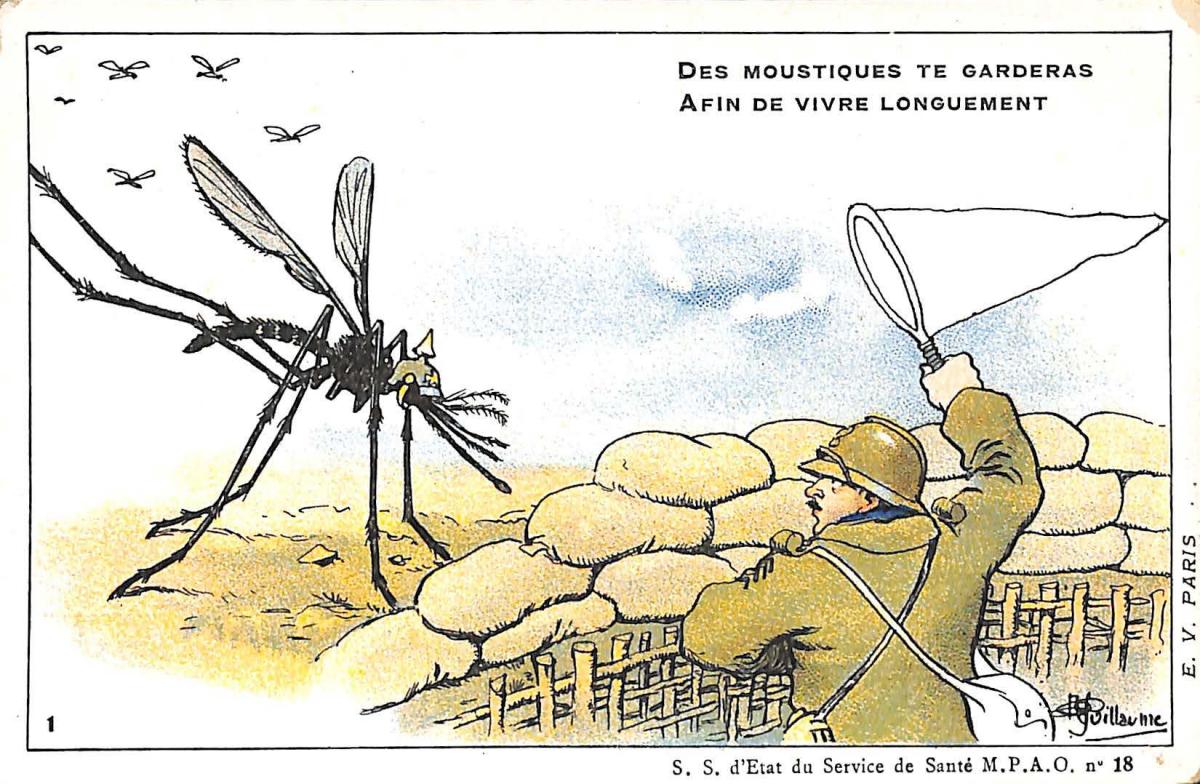 Des moustiques te garderas afin de vivre longuement. França: S.S. d'Etat du Service de Santé, 1914-1918.
Des moustiques te garderas afin de vivre longuement. França: S.S. d'Etat du Service de Santé, 1914-1918.
You will protect yourself from mosquitoes to live for many years. Malaria postcard drawn by the French illustrator Albert Guillaume, intended for the army in the East during the First World War.
 Au "toubib" tu démontreras que tu l'as prise sagement. França: S.S. d'Etat du Service de Santé, 1914-1918.
Au "toubib" tu démontreras que tu l'as prise sagement. França: S.S. d'Etat du Service de Santé, 1914-1918.
You will prove to the doctor that you have taken it correctly. Malaria postcard drawn by the French illustrator Albert Guillaume, intended for the army in the East during the First World War.
English soldiers on the Thessaloniki front during World War I taking their daily dose of Quinine.
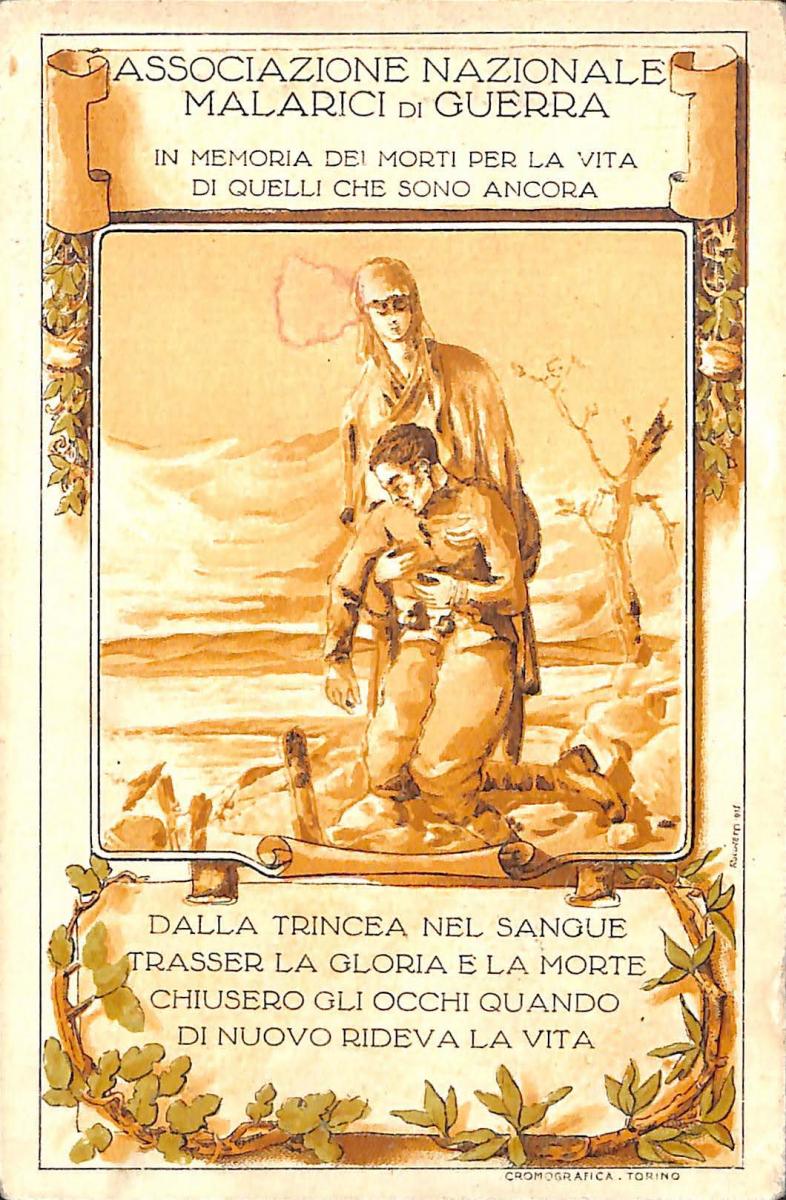 Dalla trincea nel sangue trasser la gloria e la morte chiusero gli occhi quando di nuovo rideva la vita. Italia: Associazione nazionale malarici di guerra, 1914-1918.
Dalla trincea nel sangue trasser la gloria e la morte chiusero gli occhi quando di nuovo rideva la vita. Italia: Associazione nazionale malarici di guerra, 1914-1918.
Commemorative postcard of the Italian National War Malaria Association. Issued during the First World War. From the trench they returned with glory and death in their blood.
 Instituto Scientifico Ricerche. Campagna Nazionale contro la Malaria. Questa é la guerra che noi preferiamo. Itàlia: Instituto Scientifico Ricerche.
Instituto Scientifico Ricerche. Campagna Nazionale contro la Malaria. Questa é la guerra che noi preferiamo. Itàlia: Instituto Scientifico Ricerche.
Commemorative card of the national campaign against malaria in Italy during the regime of Benito Mussolini. The following legend appears: This is the war we prefer.
 Ration coupons issued during the Civil War (1937).
Ration coupons issued during the Civil War (1937).
Includes vouchers for the Dispensario Antipalúdico valid for Atepe or Quinine pills.
 War Department. This is Ann, she’s dying to meet you. EUA: : U.S. Government Printing, 1944.
War Department. This is Ann, she’s dying to meet you. EUA: : U.S. Government Printing, 1944.
This is Ann, she’s dying to meet you. Brochure illustrated by the American cartoonist Theodor Seuss Geisel (Dr. Seuss) to inform troops during World War II about the transmission of malaria through the Anopheles mosquito, to which American soldiers referred as Ann.
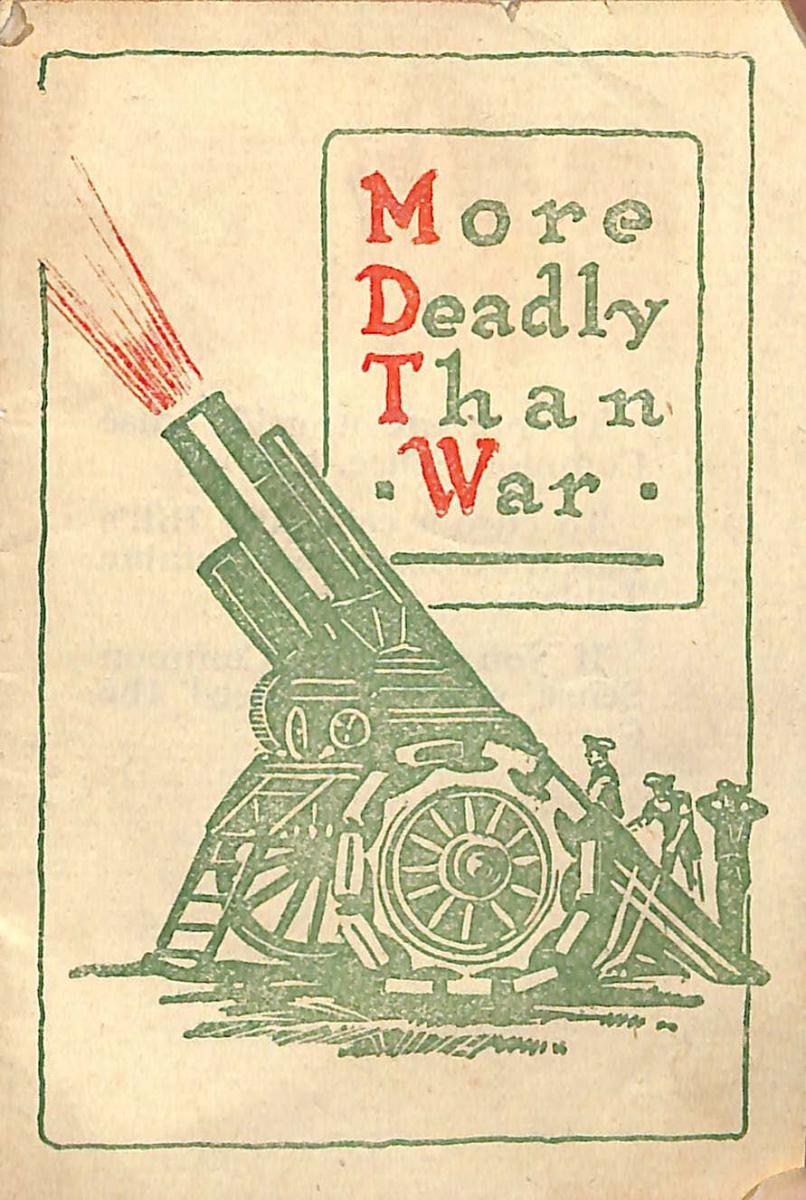 More deadly than war. Detroit: W. H. Hill Company.
More deadly than war. Detroit: W. H. Hill Company.
More deadly than war: advertising for Cascara Quinine, a cough remedy that contains quinine. The booklet describes the importance of diseases such as malaria and pneumonia, highlighting the negative impact they have on the health of armies and populations.
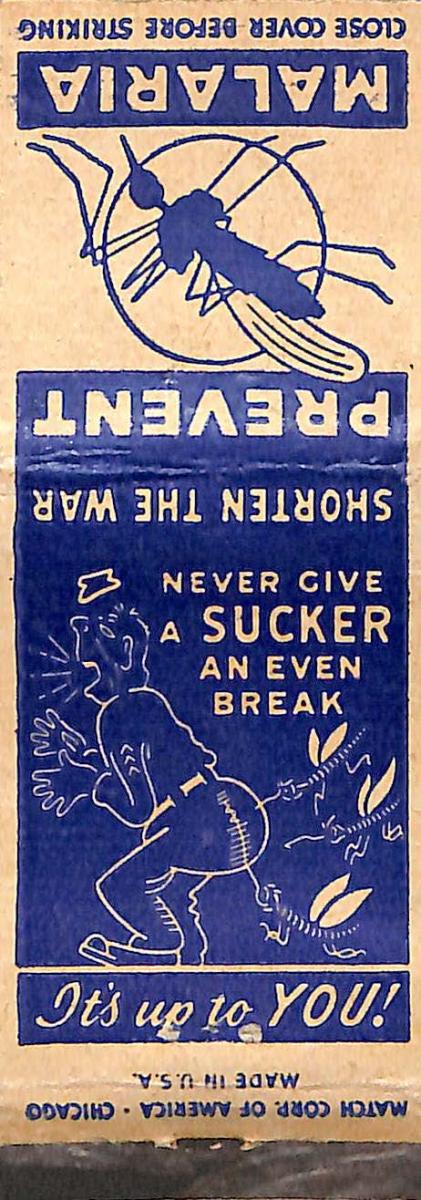 Match Corp. Of America. Prevent malaria. Shorten the War. Chicago: Match Corp. Of America, 1940-1945.
Match Corp. Of America. Prevent malaria. Shorten the War. Chicago: Match Corp. Of America, 1940-1945.
Matchbox with the message: prevent malaria, shorten the war.
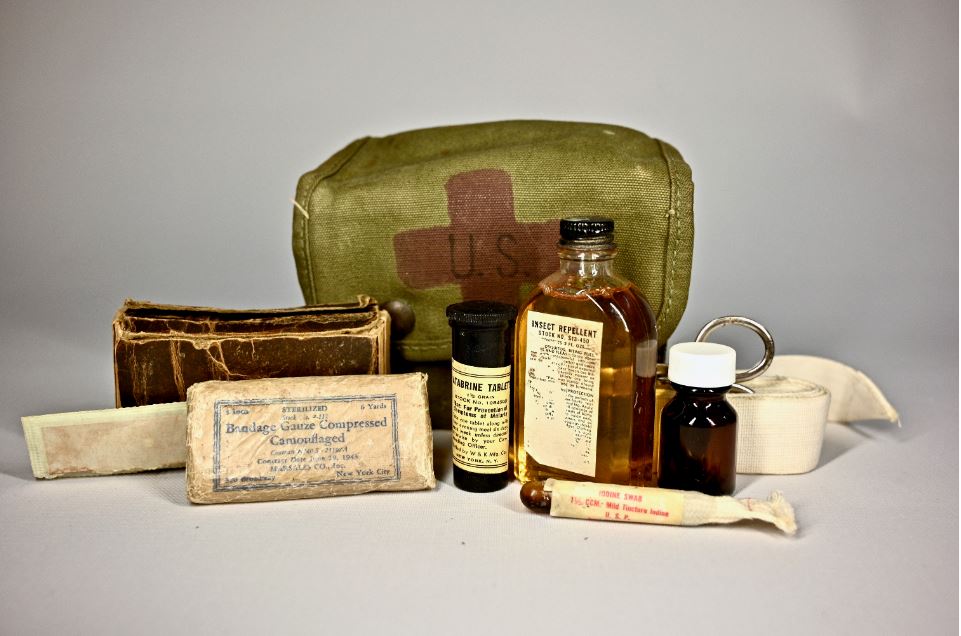 US Army. U.S. Army first aid kit. Estats Units: US Army, 1945.
US Army. U.S. Army first aid kit. Estats Units: US Army, 1945.
U.S. Army first aid kit on the Pacific front during World War II. It contains several tablets of athebrine, a drug used to prevent malaria.
 Imperial Chemical Pharmaceuticals. Mepacrine Hydrochloride Tables. London: Imperial Chemical Pharmaceuticals, 1945.
Imperial Chemical Pharmaceuticals. Mepacrine Hydrochloride Tables. London: Imperial Chemical Pharmaceuticals, 1945.
Metal container for storage and transport of Mepacrina (Atebrin) during World War II.
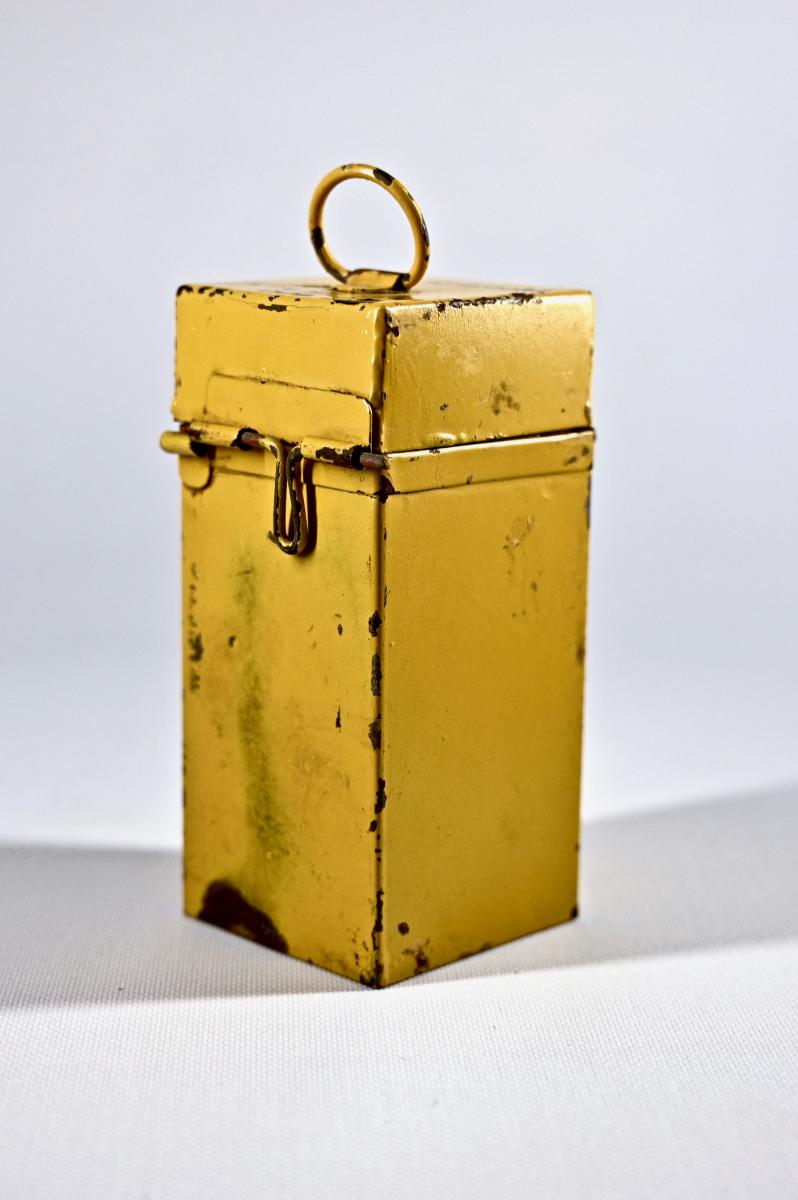 Metal container used to transport and store quinine and athebrine during World War II.
Metal container used to transport and store quinine and athebrine during World War II.
 Bayer. Atebrin. Alemanya: Bayer Farbenindustrie Aktiengesellcschaft.
Bayer. Atebrin. Alemanya: Bayer Farbenindustrie Aktiengesellcschaft.
Atebrin container, antimalarial used extensively by troops during World War II.
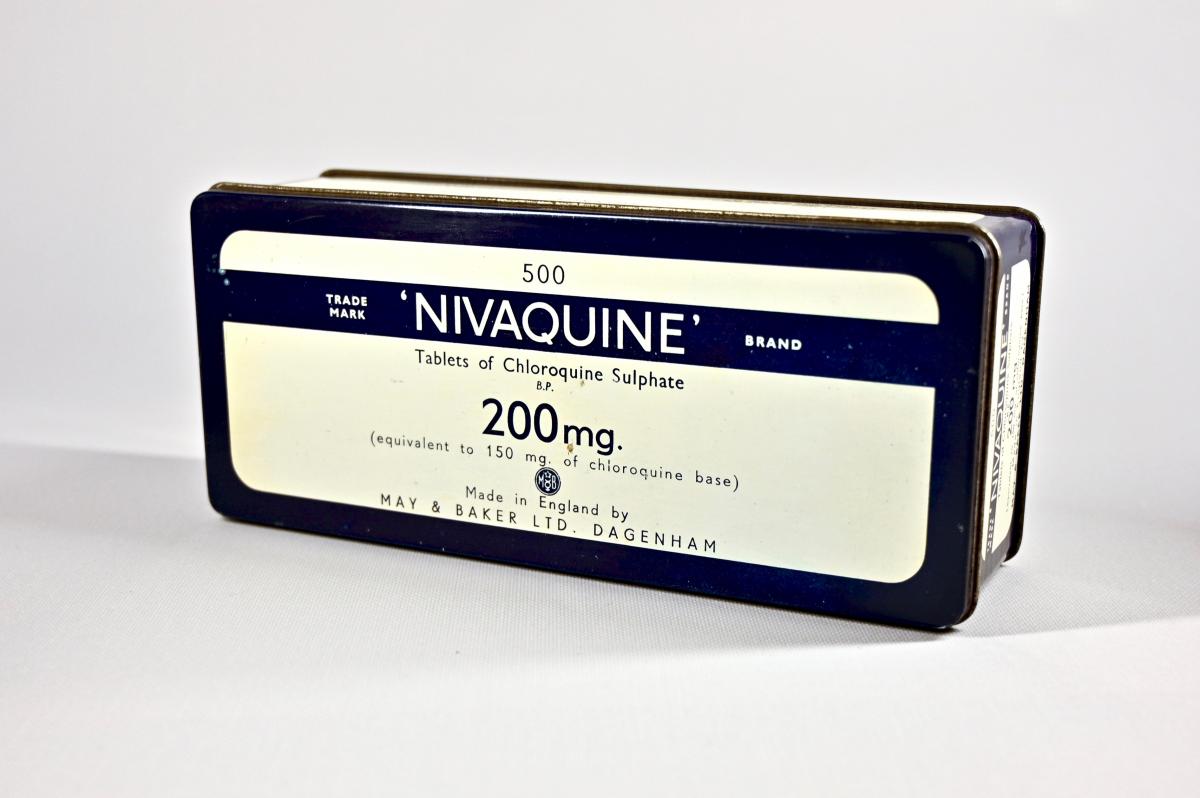 May & Baker LTD. Dagenham. Nivaquine: Tablets of Chlroquine Sulphate. May & Baker Ltd. Dagenham.
May & Baker LTD. Dagenham. Nivaquine: Tablets of Chlroquine Sulphate. May & Baker Ltd. Dagenham.
Chloroquine, discovered in 1934 by Hans Andersag at Bayer Laboratories in Germany, was ignored for a decade because it was considered too toxic for human use. During World War II, the U.S. government funded clinical trials that unequivocally demonstrated its effectiveness as an antimalarial treatment. It was introduced into clinical practice in 1947 for prophylactic purposes. Nivaquine was one of his trade names.
 These men didn't take their atabrine. 1941.
These men didn't take their atabrine. 1941.
Signal of the Pacific front during World War II. Known by the trade name Atebrin, mepacrine was a synthetic drug that was approved in the 1930s. Its side effects and unpleasant taste caused many soldiers to refuse their intake, although it was mandatory, which is why many campaigns were developed to raise awareness.
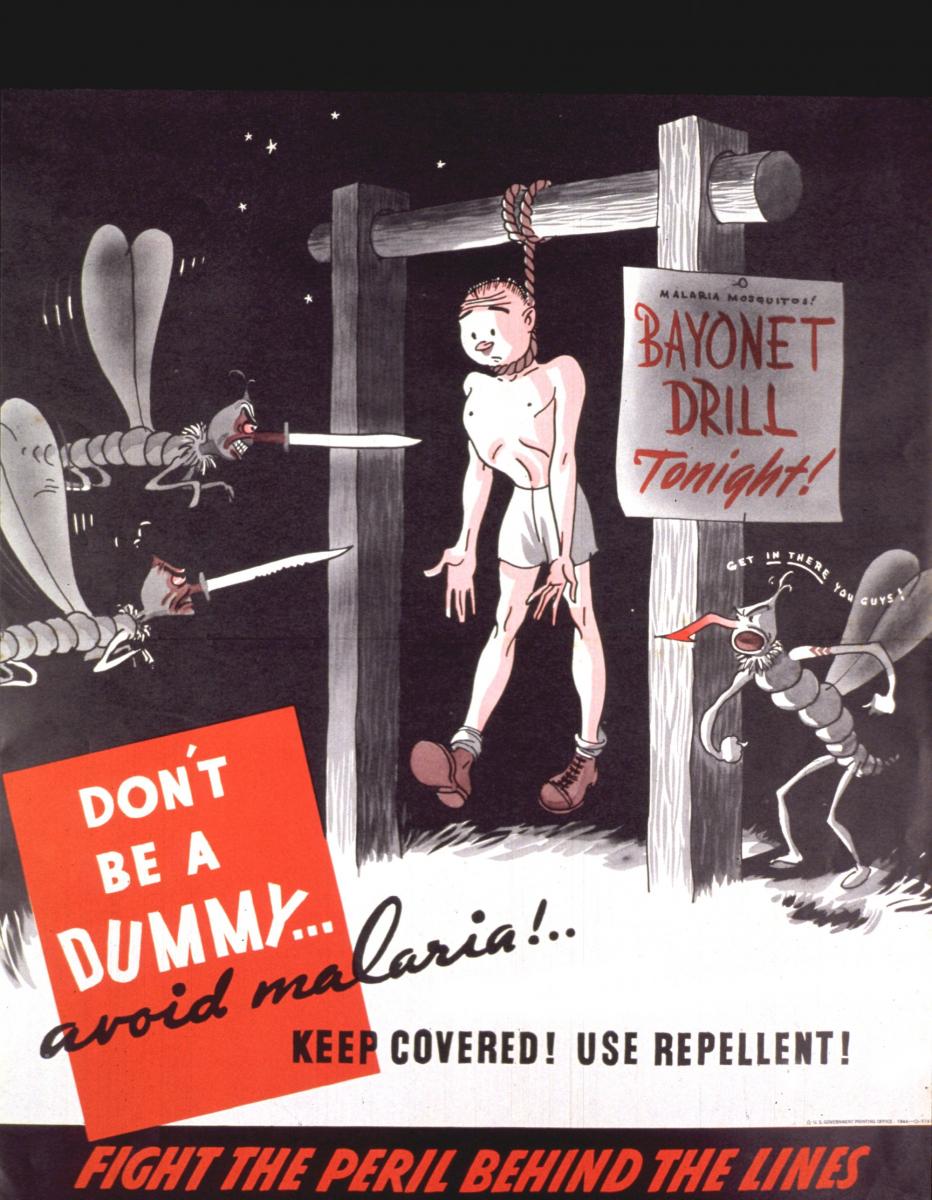 Don't be a dummy... Avoid malaria!.. Keep Covered! Use Repellent! Fight the peril behind the lines. Estats Units: 1940-1945.
Don't be a dummy... Avoid malaria!.. Keep Covered! Use Repellent! Fight the peril behind the lines. Estats Units: 1940-1945.
Advertising campaign to encourage American troops to sleep protected by a mosquito net and thus avoid being bitten by malaria-transmitting mosquitoes.
 Marine suspected of having malaria gets a blood test at this malaria control unit on Guadalcanal. 1944.
Marine suspected of having malaria gets a blood test at this malaria control unit on Guadalcanal. 1944.
U.S. Marines admitted on suspicion of malaria to a field hospital in Guadalcanal, Solomon Islands, during the Pacific front of World War II.
 Fighting Malaria in Pacific. 1944.
Fighting Malaria in Pacific. 1944.
Sick US Marines waiting to be evaluated at a malaria control point in Guadalcanal, Solomon Islands. General Douglas MacArthur, in 1943, uttered these words in connection with the influence of malaria on the front: This is going to be a long war if for every division I have fighting the enemy I have a second division in a hospital with malaria and a third convalescing from this debilitating disease!
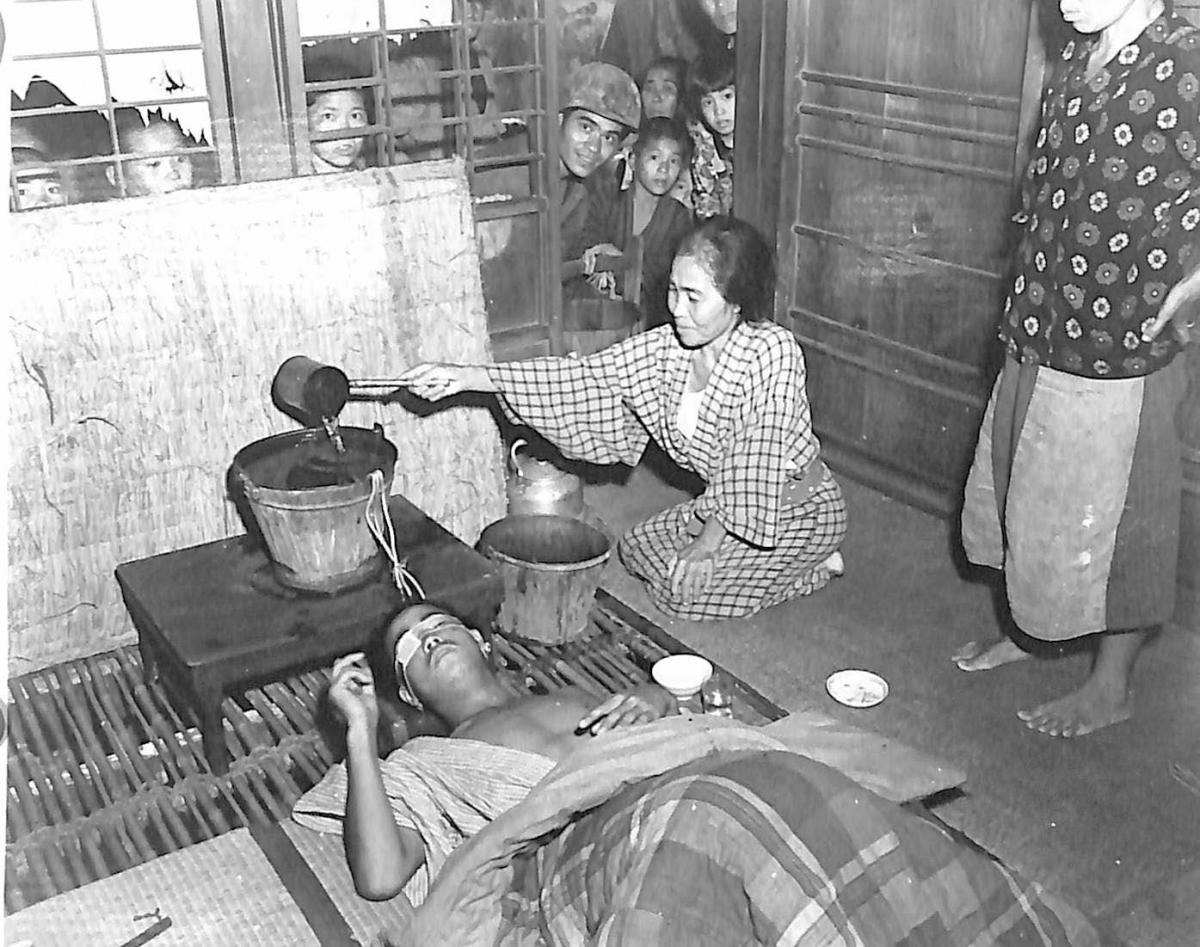 Photograph of a malaria patient in Yonakuni Jima, Japan, on October 7, 1945, during World War II.
Photograph of a malaria patient in Yonakuni Jima, Japan, on October 7, 1945, during World War II.
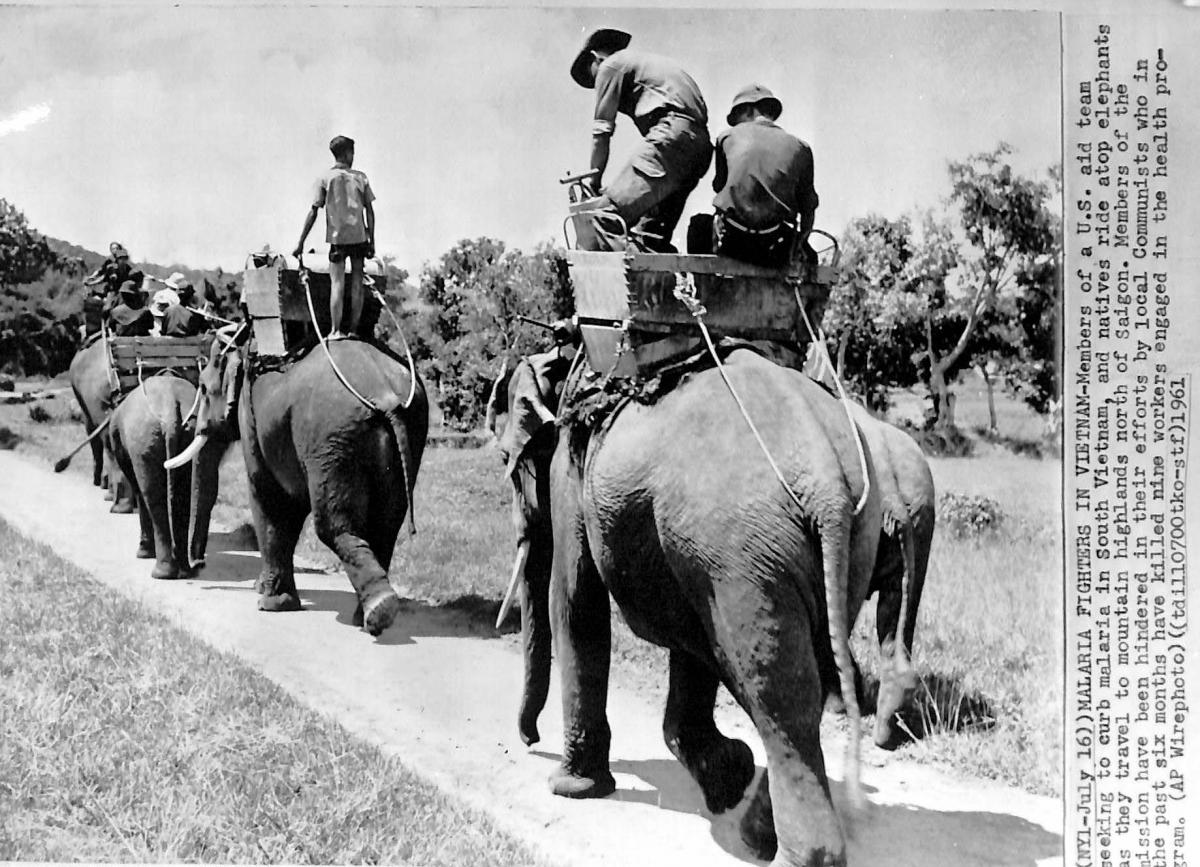 Malaria fighters in Vietnam. Vietnam: 1961.
Malaria fighters in Vietnam. Vietnam: 1961.
Fighting malaria in South Vietnam. Members of a U.S. anti-malaria team traveling on elephants in northern Saigon during July 1961. At the time, it was reported that 9 people on such medical missions had been killed by "local communists."
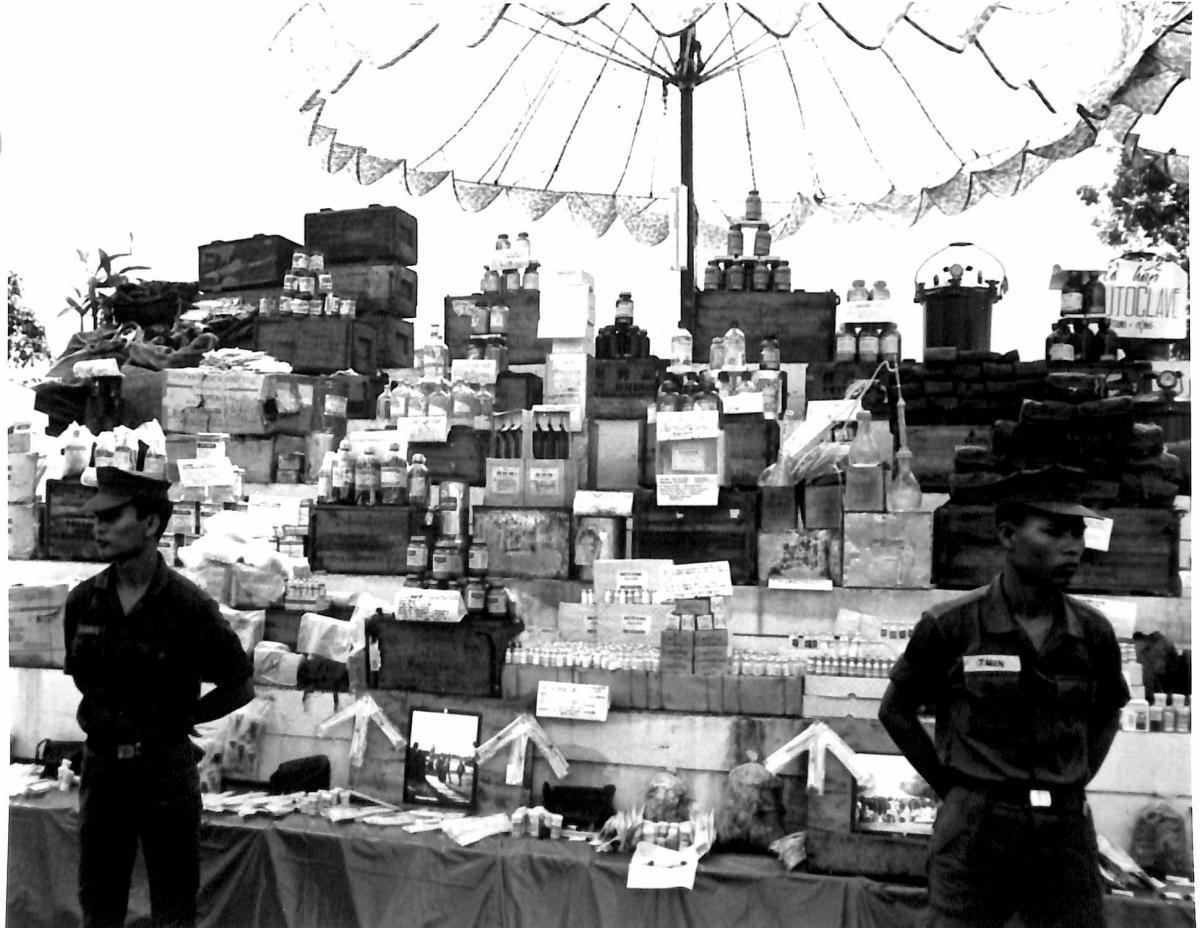 Medical supplies, antimalarial pills included, confiscated in Cambodia. Vietnam: 1970.
Medical supplies, antimalarial pills included, confiscated in Cambodia. Vietnam: 1970.
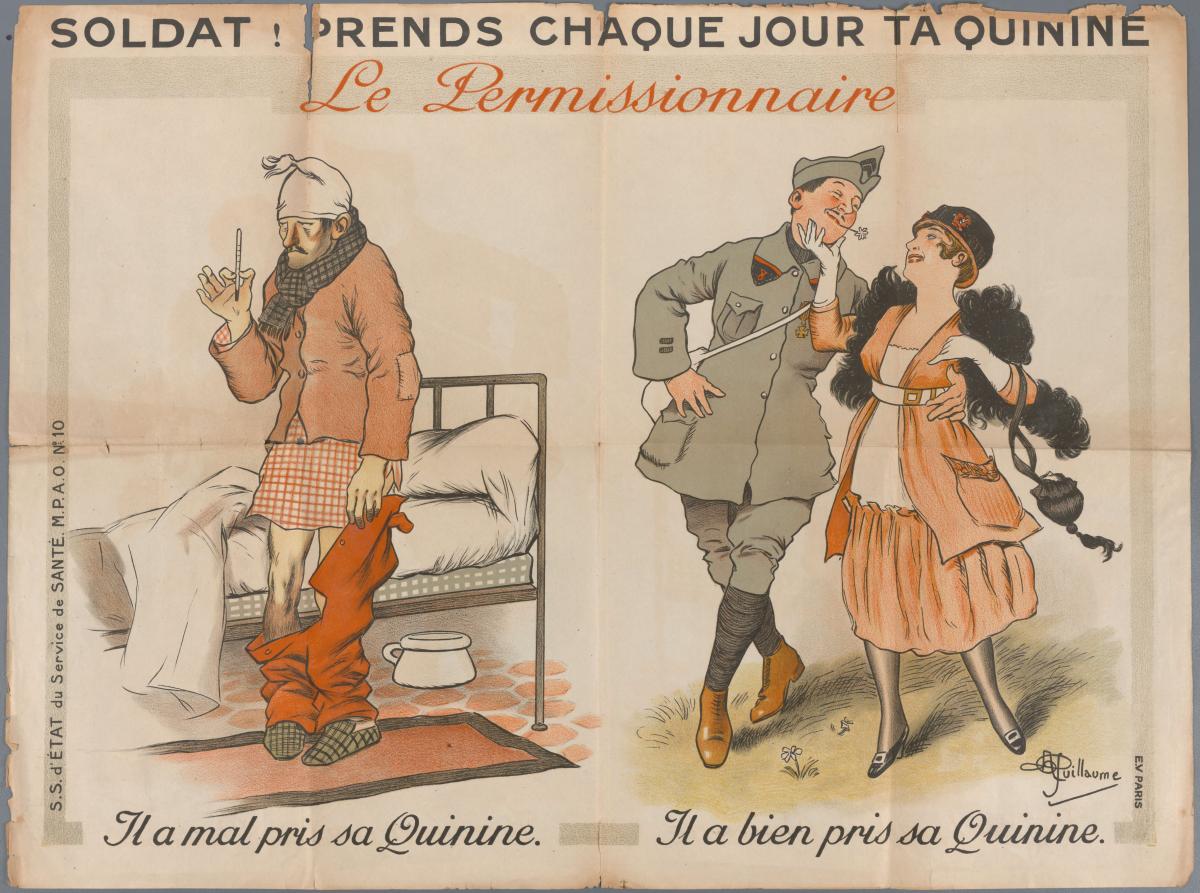 Soldat: prends chaque jour ta quinine. Le Permissionnaire. França: S.S. d'Etat du Service de Santé, 1914-1918.
Soldat: prends chaque jour ta quinine. Le Permissionnaire. França: S.S. d'Etat du Service de Santé, 1914-1918.
Soldier: Take your quinine every day. Antimalarial poster drawn by French illustrator Albert Guillaume, intended for the army in the East during the First World War.

